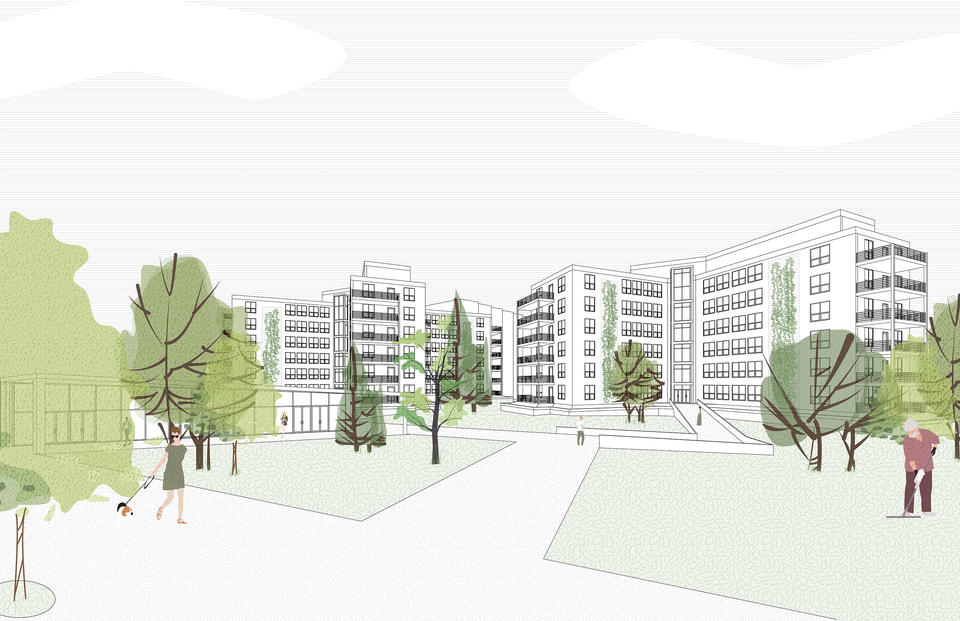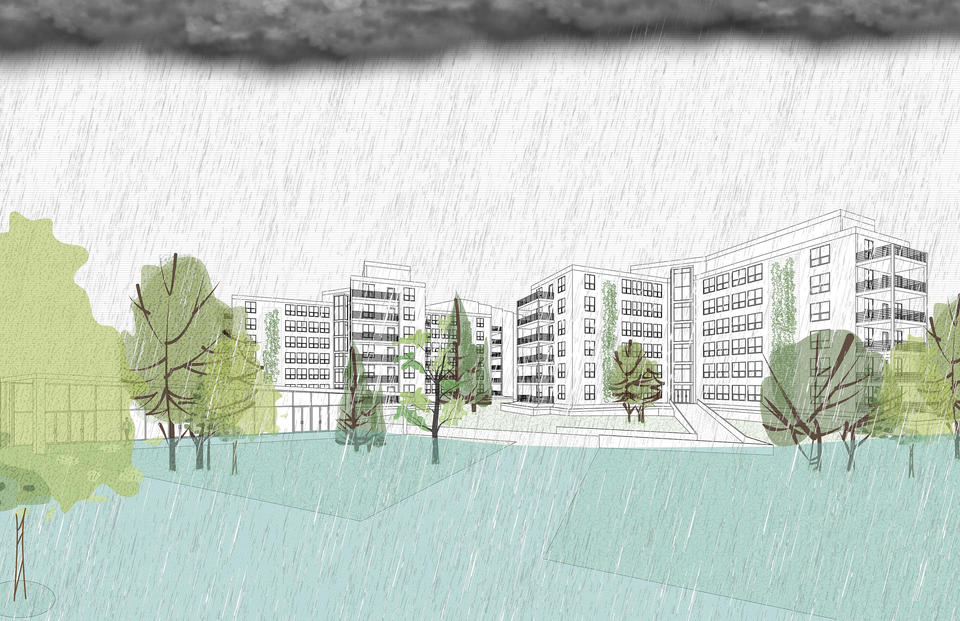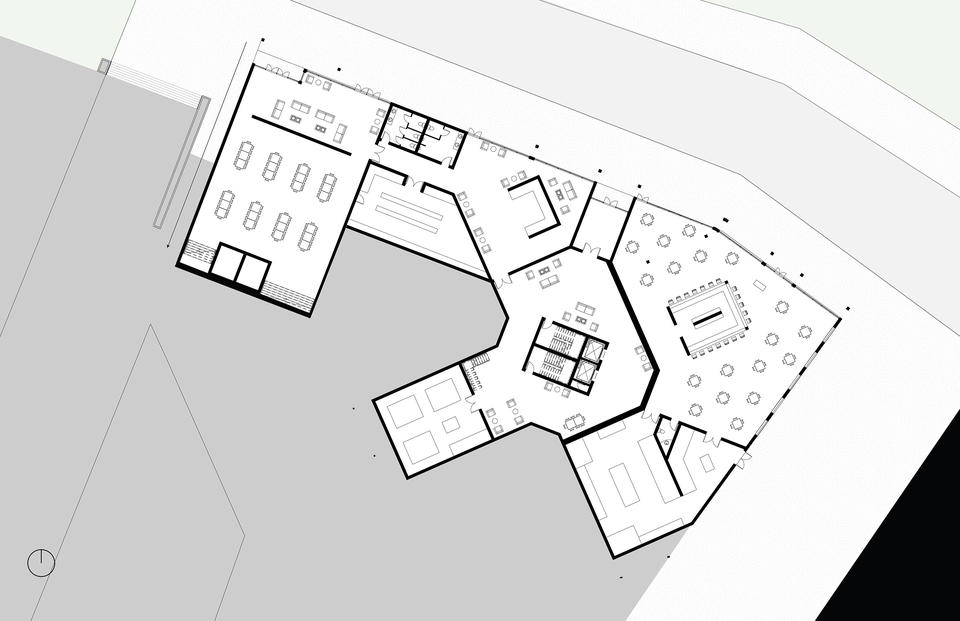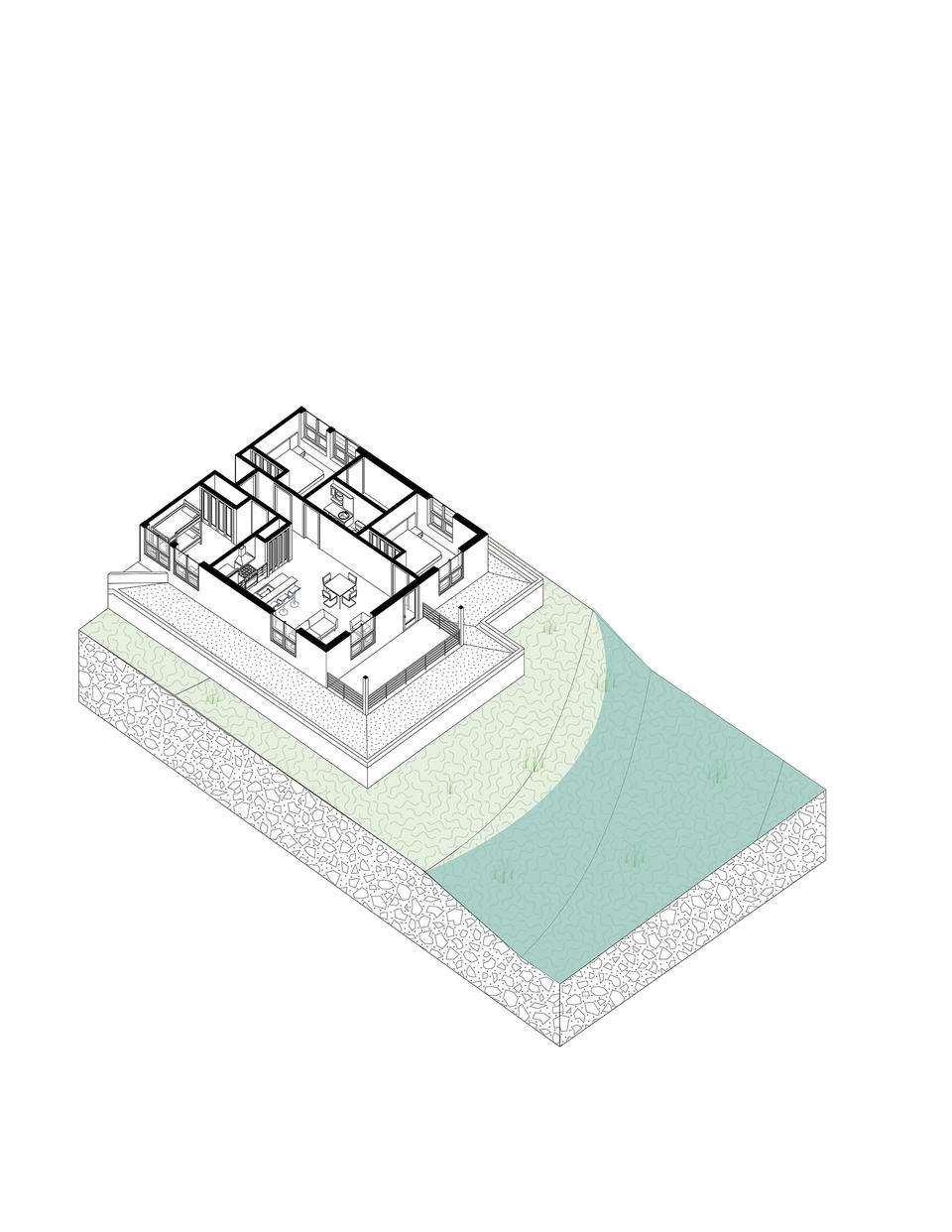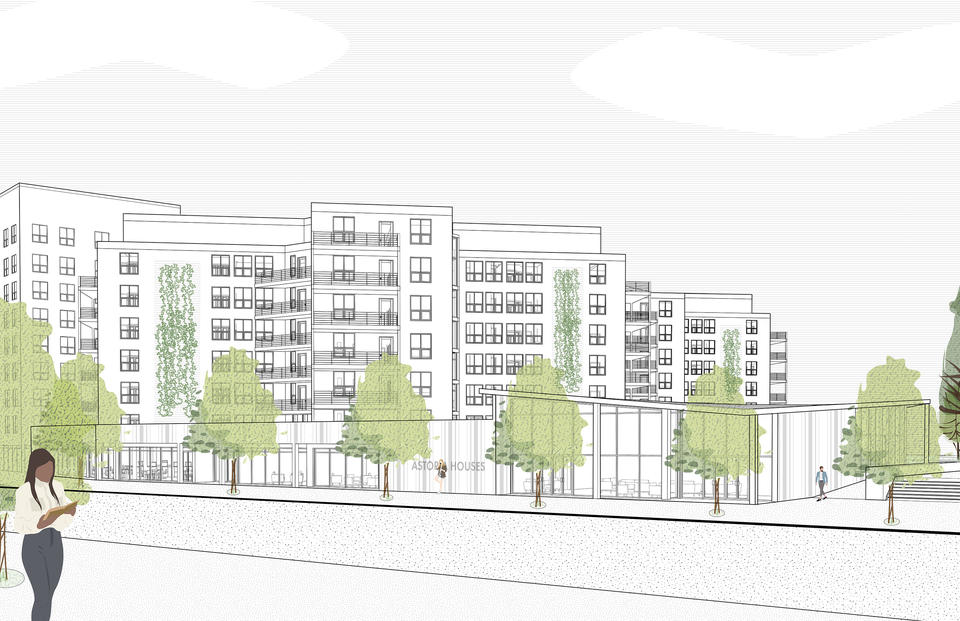James Juscik
Astoria Houses: A Resilient Future
As climate change leads to more intense and frequent storms throughout the northeast, architecture needs to adapt to be able to protect life and property. As we can see from Superstorm Sandy, and the more recent Hurricanes Ida, and Henri the current architecture and infrastructure is failing its purpose. . Nowhere is this more true than in Astoria Queens.Among the New York City neighborhoods most impacted by climate change, Astoria has received little investment to make it more resilient. The Astoria Houses public housing complex becomes the perfect site to design a new mixed density, resilient neighborhood of the future.
Astoria Houses is located on a peninsula of reclaimed land on the East River. This single ownership site has access to transit and views of the Manhattan Skyline.a. Built on filled land, the Astoria Houses are already experiencing occasional flooding and will be inundated over time. . This project strives to manage and minimize the impact of climate change through smart architectural design. Core infrastructure such as cooling, heating, and water systems can be storm-proofed as much as possible to allow them to continue to function during a disaster with minimal interruptions to the residents of the complex.
Creating overlapping fail safes at multiple scales in the project allows for multiple systems to fail before something in the complex goes wrong and before residents would seriously feel the impact of a storm event. The proposed large-scale resilient strategies include elevating the residential components of the neighborhood well above the one hundred year flood lines, creating designated flood zones such as an amphitheater and a sunken parking garage, and creating a series of storm swales that prevent major storm surges and coastal waves from impacting the site. At a smaller-scale using water resilient materials at the ground level of buildings and designing a landscape of water heavy plantings and permeable pavements add an additional layer of protection and resiliency. This secondary step becomes the prevention layer of defense to a storm or water event.
Resiliency becomes the key for creating a new Astoria House’s which will be able to stand the test of time. Resiliency uses the principles of preparation, prevention, and adaptation for a disaster. The end goal of this process is putting people first and designing a more livable neighborhood that offers an improved quality of life and faces minimal interruptions in the era of climate change and rising sea levels.
Image

The Development
The Site
The major threats that exist in Astoria are climate change and residents being dispersed due to gentrification of the neighborhood. The city owned complex is able to counter the gentrification problem but needs drastic changes to withstand climate change. Major flooding has occurred during Hurricane Sandy, Henri, and Ida.
The Astoria Houses complex is located in Flood zones 1, 2, and 3. About 33% of the residents are in flood zone 1 and 50% live under the 100 year flood line. Due to climate change making floods more likely a vast majority of residents can expect to see a flood in their lifetime if they stay at the complex.
As a result of this, the major concerns of the project become creating a climate resilient strategy to save the neighborhood while making sure the number of apartment units in the complex stays the same or increases to avoid displacing residents. Many residents of buildings in the flood zones might be relocated into new buildings, if those are constructed prior to the demolition of their homes.
Image
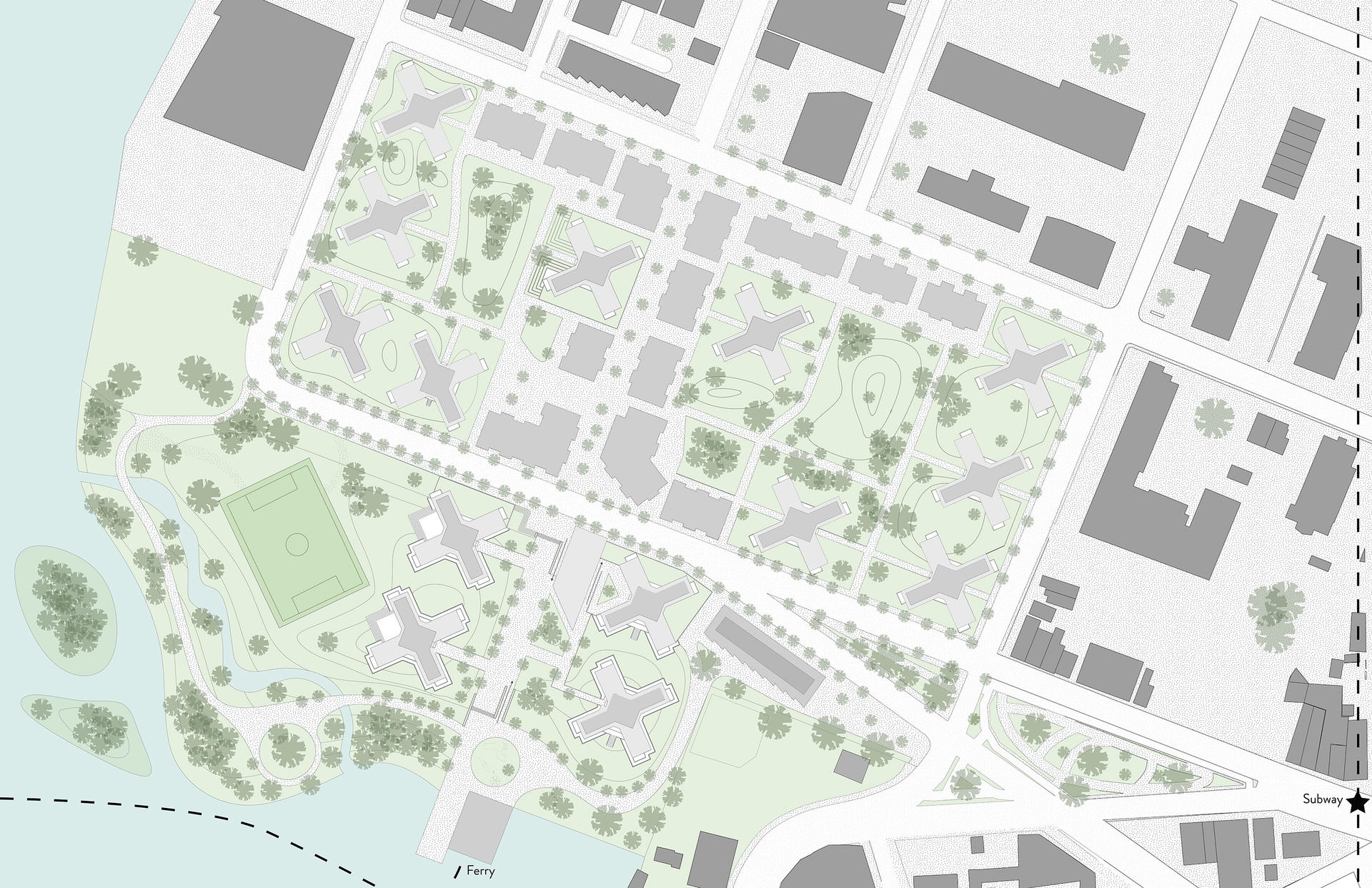
Regional Site Plan
The Proposal In Normal Times
Creating a terraced landscape became fundamental to the design. The project started from two distinct perspectives: one focused on the landscape, one focused on urbanism. The final step became how to intertwine these concepts and to create a cohesive project. To do this the podium building became an important study as it features both moments. The terracing was studied through section and perspective and focused on mounding the landscape around the building to achieve a flood mitigation method that was natural and long term. It was important that the space be enjoyable and have a function in normal circumstances as well as during storm events. To achieve this gradual slopes make more sense in some places while retaining walls and steeper slopes are used in others. This also adds more variety to the site and creates a more dynamic experience.
The New Astoria Houses development aims to create a resilient neighborhood for the future. It focuses specifically on environmental and urban resilience. The development follows a few key principles of guaranteeing exterior space for everyone in the development, creating a mix of social spaces to engage different residents needs, maintain the same number or greater of apartment unit beds, and when possible work with the existing site conditions and buildings.
The development sees 14 of the existing buildings kept for renovation work. This creates a common floor-plan for each of these buildings with the exception of the ground floor where some buildings see podium spaces introduced that add a mix of commercial or social uses to the buildings. The new buildings designated on the master plan are laid out to improve the urban context and to maintain the same number of apartment units for the complex overall.
The existing buildings fall into the category of podium and no podium. The podium buildings and non-podium buildings do have the same floor plans above the ground floor. The redesigned residential floors feature units which include their own balconies, on floor laundry, and a dynamic social space.. In the existing buildings Studio, 1 bedroom, 3 bedroom, and 4 bedroom units exist.
Image

Showcasing an Urban Podium Building
Flood and Storm Resilience
Environmental resilience works together in tandem with urbanism. The main pedestrian parkway is full of life with the addition of commercial and social functions. It contains water intensive plants and is sloped to move water towards the riverfront. The materiality also becomes a major change from the existing asphalt to water permeable pavers.
The design features a more organic water’s edge with the addition of small islands off this new coast line. The small islands were designed to use the brick and concrete remains of the buildings torn down on the site with a layer of soil initially placed on top to allow plantings to grow. These islands are designed to minimize the impact of waves on the site, and shelter new marine life.
The design follows New York City’s Smart Street Plan and Flood Resilience Plan. This divides the landscaped spaces into three distinct types, zoned outdoor spaces (which feature a playground, dog-park, and soccer field), non-zoned lawn space, and importantly, non accessible flood mitigation zones that feature wild grasses and water intensive plants.
The combination of these different designs aim to create a neighborhood that is lively, more resident friendly, and most importantly resilient from an environmental and urban standpoint going forward. The master plan and specific designs outlined below aim to achieve the highest level of design for one of the most vulnerable sites in all of New York..
Image
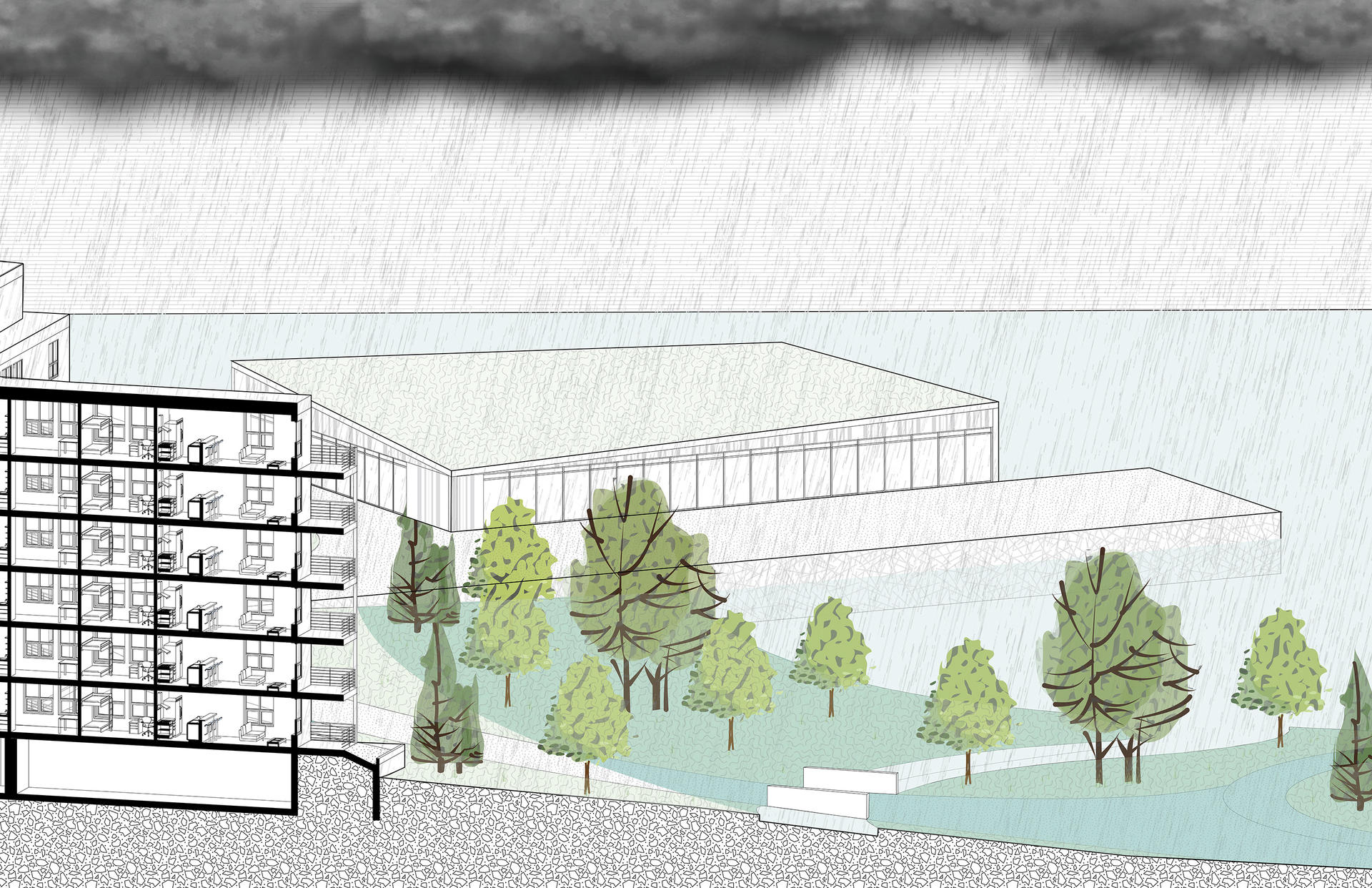
Section Showcasing Storm Conditions
Typical, Storm and Urbanism Conditions
- Architecture
- Ceramics
- Design Engineering
- Digital + Media
- Furniture Design
- Global Arts and Cultures
- Glass
- Graphic Design
- Industrial Design
- Interior Architecture
- Jewelry + Metalsmithing
- Landscape Architecture
- Nature-Culture-Sustainability Studies
- Painting
- Photography
- Printmaking
- Sculpture
- TLAD
- Textiles
